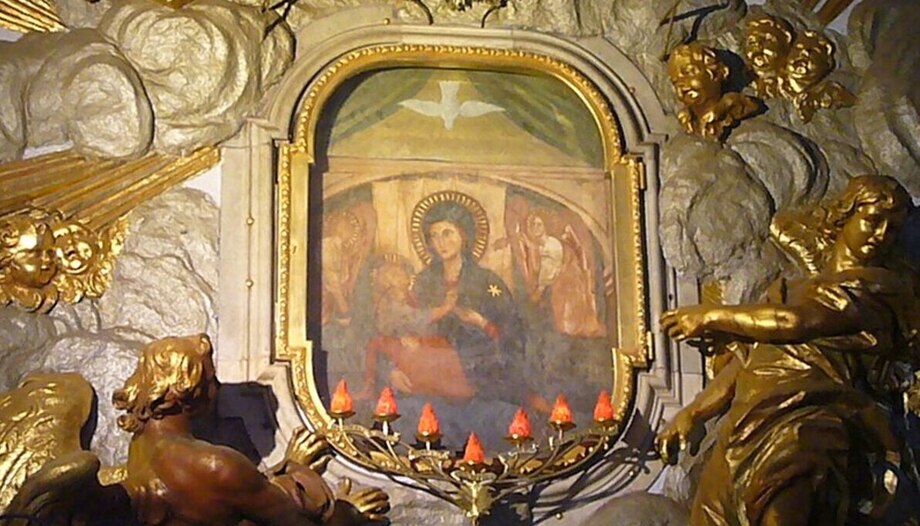On June 6, 1944, Pius XII addressed a crowd that packed St. Peter's Square: "With unspeakable gratitude we venerate the Most Holy Mother of God and our Mother, Mary, who to the glories of 'Salus Populi Romani' has added a new proof of her maternal goodness that will remain in the imperishable memory of the annals of the Urbe". That is, to have saved Rome from the Allied bombings in a city under German domination.
The speech of Pope Pius XIIThe radio message, broadcast the following day, is set in the context of the Second World War. A year earlier, in Rome, the Scalo San Lorenzo had been bombed, as had the capitals and major cities of Europe. The war involved many nations and the populations lived in fear and uncertainty. The retreating Germans had entrenched themselves in Rome.
Vatican diplomacy strove to prevent the Eternal City from being bombed, stressing that it was a "holy city". British Prime Minister Winston Churchill responded that if Rome was holy, so was London, and yet it had suffered the bombing. This response was part of a wider diplomatic and military exchange on the importance of preserving cultural and historical heritage. during armed conflicts.
Although the bomber chief, referring to Rome, indicated that "false sentiments" were not enough to prevent air strikes.
"On June 4, 1944, the Romans gathered in prayer before different sacred images. Particularly dear is that of Divine Love, on a ruined tower. Pope Pius XII feared that it would be destroyed by bombs, so, to preserve it, he moved it from the sanctuary of 'Castel di Leva' to the center of Rome. First it was housed in the small church of the same name in 'Fontanella Borghese' square; then, in May, given the enormous influx of faithful, they decided to move it to 'San Lorenzo in Lucina' and again to 'Sant'Ignazio di Loyola in Campo Marzio'", indicates a communiqué from the Vicariate of Rome recalling the date.
And he adds that in the church of St. Ignatius "on June 4, thousands of people, among believers and priests, pronounced a citizen's vow to the Virgin for the city to be saved. And that is exactly what happened: at about 7 p.m., the Allied troops entered Rome without meeting the slightest resistance from the Germans, who abandoned the city to the north.
Eighty years later, the Diocese of Rome is remembering those events in four different places: Saturday, June 1, at the Don Orione Center in Via della Camilluccia, with the historical commemoration in the parish church Santa Maria Mater Dei, the procession to "la Madonnina", the recitation of the Rosary and the solemn Eucharistic concelebration, animated by the choir of the diocese of Rome and presided over by Cardinal Enrico Feroci, rector of the "Santuario del Divino Amore". In addition, a floral offering was made to the "Madonnina", as in 1953 in memory of the events of 1944, so that it could be seen by the whole city.
On Tuesday the 4th, the event was commemorated in the church of St. Ignatius of Campo Marzio: after the Rosary, the Mass was celebrated, during which Monsignor Baldassarre Reina read the words of Pope Francis.
On Saturday, June 8, the program will continue in the Basilica of St. Mary Major with a Eucharistic celebration presided over by Cardinal Stanislaw Rylko and the recitation of the Rosary.
The program will conclude on Sunday, June 9, at the Shrine of Our Lady of Divine Love in Castel di Leva, with a Mass presided over by Cardinal Feroci, followed by a floral offering at the Tower of the First Miracle, accompanied by the band of Divine Love.








